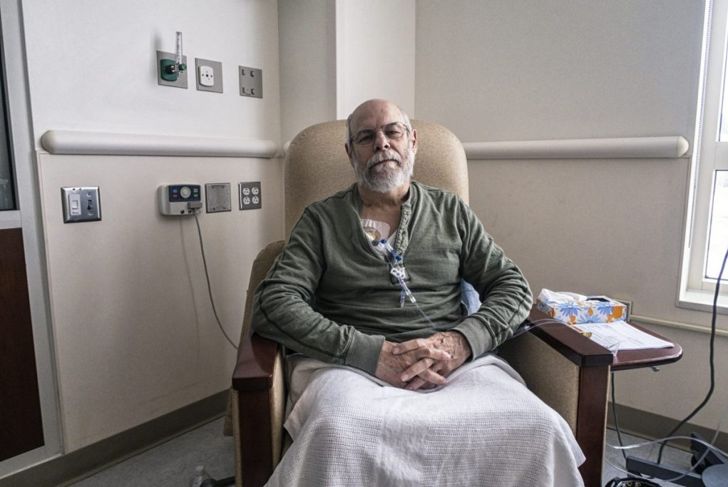The brain and spinal cord make up the central nervous system (CNS). Cancers that affect the CNS are particularly serious because this system is so important. These tumors are extremely dangerous because the brain controls most of the body’s functions, and the spinal cord facilitates signal transmission and reception for all these functions. Some cancers begin in the CNS while others move there after developing in other areas.
Causes
Doctors do not fully understand the causes of CNS cancers. Known risk factors are radiation exposure, immunodeficiency, stress, and a family history of CNS or other cancer. As a person ages, they are more likely to develop cancer, and certain genetic disorders increase the risk of specific types of CNS tumors, including Gorlin syndrome, Cowden syndrome, tuberous sclerosis, and Von Hippe-Lindau disease. Some groups believe that environmental factors, infections, and cell phone use contribute to cancer development, but there is no strong evidence to support these claims.
Symptoms
Symptoms of CNS cancers vary greatly between individuals. Even people with the same tumor types can have wildly different symptoms. General symptoms occur because a tumor is placing pressure on the CNS, and specific symptoms develop when a tumor affects the function of a part of the brain. By far, the most common symptoms are vomiting, nausea, and headaches that worsen in certain positions. Other general symptoms are slow speech, memory loss and other issues, loss of vision or hearing, back pain, seizures, and issues walking. Without treatment, CNS tumors continue to grow and damage the brain, becoming life-threatening.
Specific Symptoms
Specific symptoms develop depending on the location of a tumor in central nervous system:
Cerebellum tumors affect fine motor skills and balance.
Cerebrum tumors can cause changes in judgment, such as loss of initiative. Muscle weakness and paralysis are also possible. They may affect speech, hearing, memory, or emotion, as well.
Tumors on the parietal lobe of the cerebrum can impact perceptions of touch or pressure and cause sensation confusion on one side of the body.
Pineal gland tumors can prevent a person from looking upwards.
Pituitary tumors can trigger lactation and alter menstrual periods. In rare cases, people with these tumors exhibit hand and foot growth despite physical maturity.
Vision changes may be the result of temporal lobe, occipital lobe, or brain stem tumors.
Primary Cancers
Primary tumors are those that originate in the brain or spinal cord. Not only are these less common than cancers that spread to the CNS, but they also rarely spread beyond this system. However, they do quickly grow and spread onto other brain and spinal cord tissue. CNS cancers can begin in almost any type of cell, and the affected cell type gives the tumor its name.
Metastatic Cancers
Cancers that develop elsewhere in the body and migrate to the CNS are metastatic. These are significantly more common than primary cancers. Around half of all metastatic brain and spinal cord tumors stem from lung cancer. Other cancers that spread to the CNS are melanoma, nasopharyngeal cancer, and cancer of the colon, breast, and kidney. Cancers of unknown primary site — those for which the doctor cannot isolate the origin — can also spread to the CNS.
Diagnostic Tests
Physicians and technicians use several imaging tests and diagnostic procedures to confirm cancer. These procedures typically begin with a physical exam and a health history to discover lumps or underlying issues. A neurological exam can uncover loss of function in the brain, spinal cord, or nerves. Medical imaging techniques such as CT, MRI, or PET scans are often useful in discovering tumors or unusual cell growth. If imaging shows a tumor, surgeons usually perform a biopsy to confirm its presence and severity.
CNS Tumor Grades
The World Health Organization divides CNS tumors into four grades. These grades are largely dependent on how the cancerous cells look under a microscope.
Grade I tumors usually grow slowly and do not invade other tissues. They are often treatable.
Grade II tumors grow slowly but are capable of spreading into nearby brain tissue. Even with treatment, they are more likely to return.
Grade III tumors look abnormal under the microscope, can spread into nearby tissue, and are more likely to require treatment.
Grade IV tumors are the fastest-growing tumors and require aggressive treatment.
Prevention and Screening
Because experts do not know what causes primary CNS cancers, it is difficult to recommend preventative measures. Secondary cancers are more common and may be easier to avoid. Smoking dramatically increases the likelihood of developing lung cancer, the type most likely to spread to the central nervous system. Those with a family history or personal history of cancers or CNS disorders should receive regular checkups. There is no effective screening program for CNS cancers, so observing possible symptoms is key. This is difficult, however, because many can be mistaken for other, often less severe, conditions.
Treatment
The goal of cancer treatment is to alleviate symptoms, increase survival, and eliminate the need for additional medications. Treatment options can vary depending on a number of factors, such as the type of cancer and its severity. Doctors commonly employ a combination of surgery, radiotherapy, and chemotherapy to maximize the chances for survival. A surgeon’s goal is to remove as much of the tumor as possible while preserving brain function. Afterward, chemotherapy or radiation therapy can destroy the remaining cancer cells. The former uses tumor-killing medication to prevent cancer cells from dividing and replicating. Radiation therapy is particularly effective in older individuals with specific types of tumors.
Prognosis and Recovery
Cancer and cancer treatments are usually overwhelming for the person experiencing them, and CNS cancers can be particularly difficult. It is important to have a solid support structure because the treatments often have notable physical and emotional side effects. Follow-up care can help with some of these issues and may involve counseling, occupational therapy, or other medication. Ongoing cancer research is vast in scope, and most experts are optimistic about the long-term possibilities.

 Home
Home Health
Health Diet & Nutrition
Diet & Nutrition Living Well
Living Well More
More




















